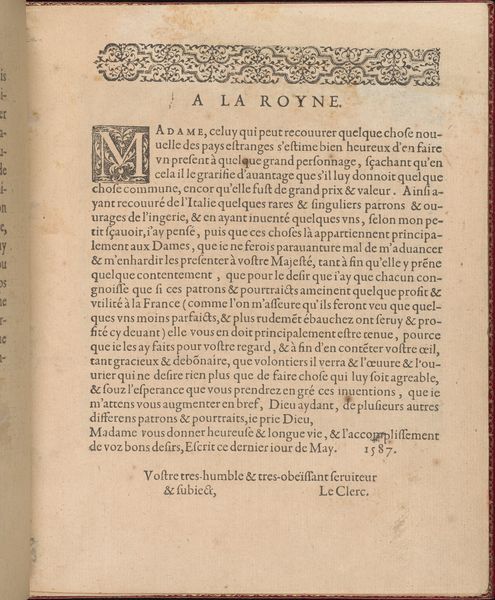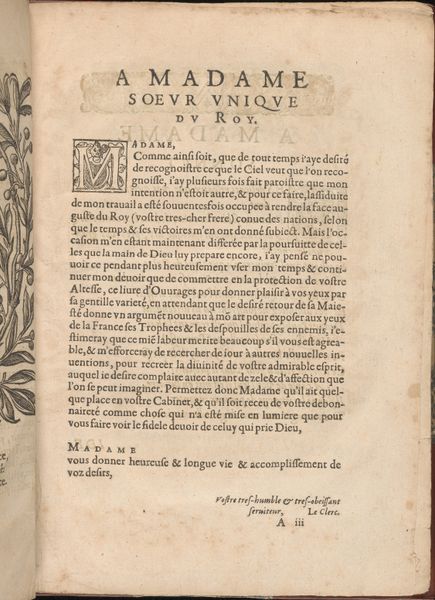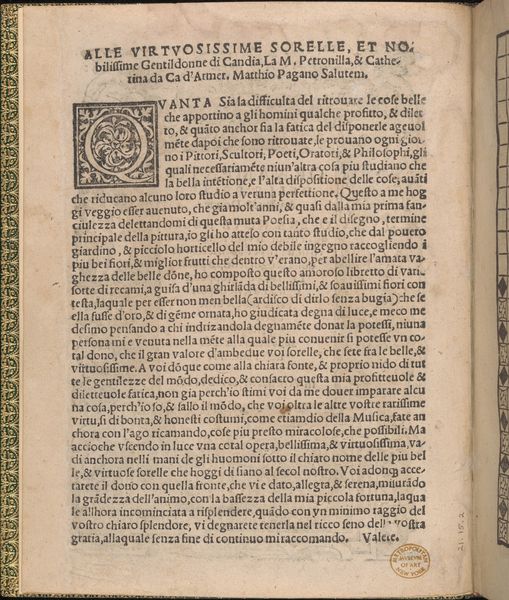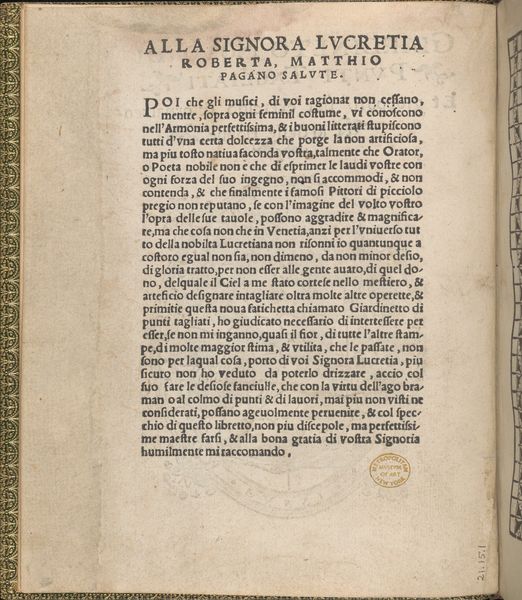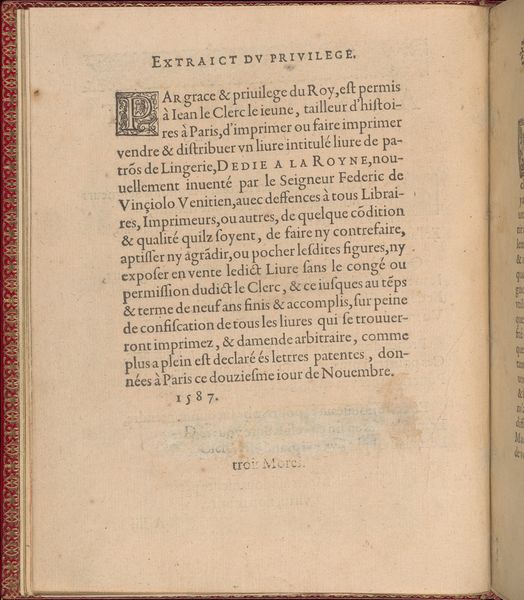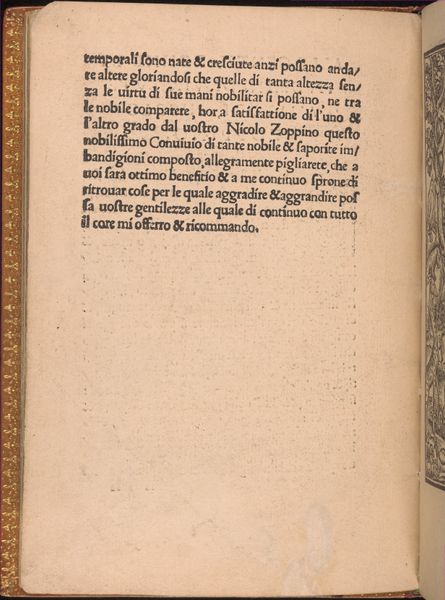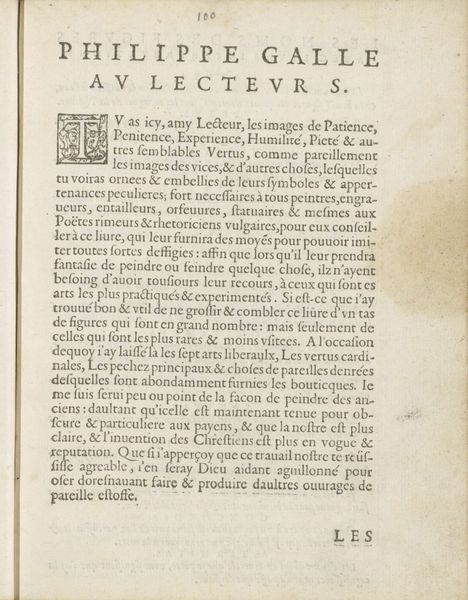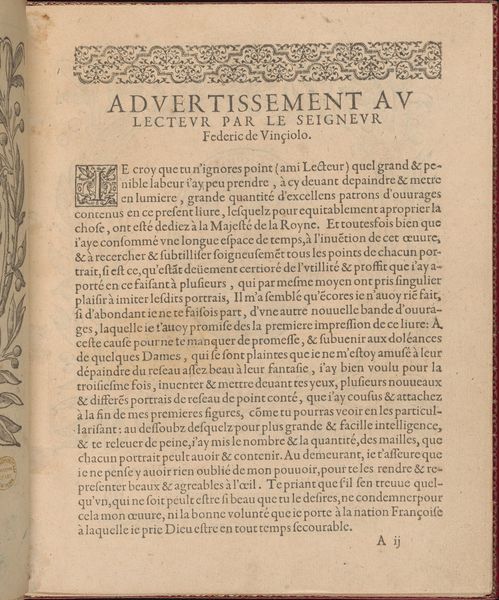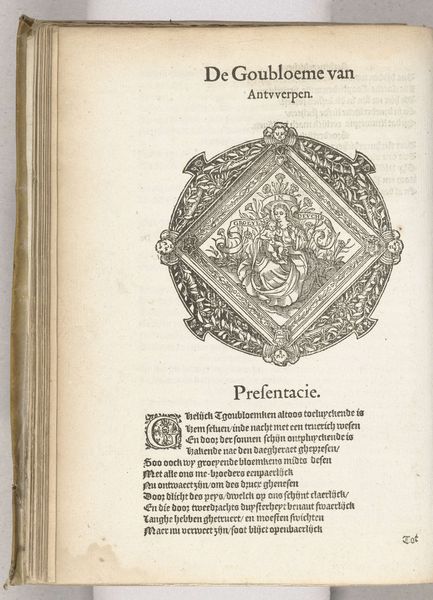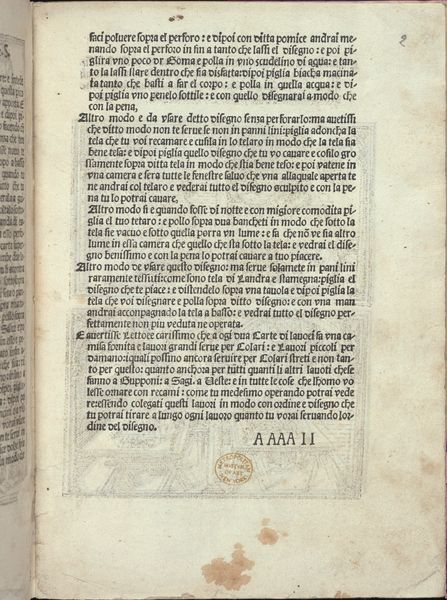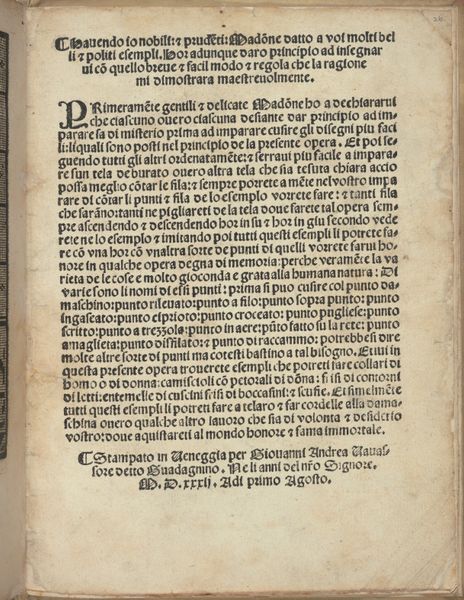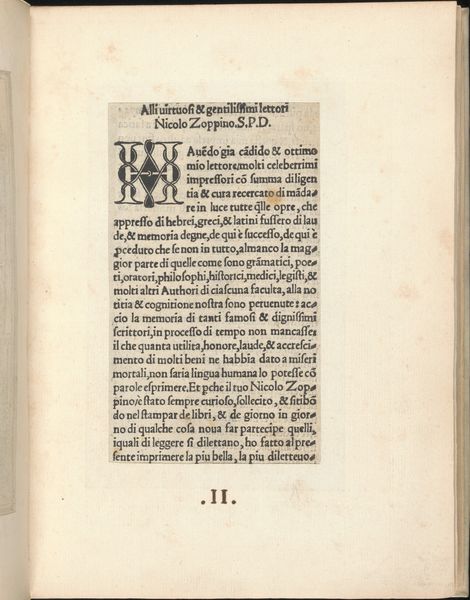
drawing, print, intaglio, textile, paper, woodblock-print, woodcut
#
drawing
# print
#
intaglio
#
textile
#
paper
#
woodblock-print
#
woodcut
#
watercolour illustration
#
italy
Dimensions: Overall: 7 7/8 x 5 1/2 in. (20 x 14 cm)
Copyright: Public Domain
Curator: Let’s explore “Convivio delle Belle Donne, page 2 (recto),” a piece created in 1532 by Nicolò Zoppino. Housed at the Metropolitan Museum of Art, this artwork is primarily an intaglio print utilizing woodblock and woodcut techniques on paper. Editor: Immediately, I'm struck by how intimate and textual it is. It feels like holding a secret whispered across centuries, a glimpse into a very different world. Curator: It is. The text is actually a dedication. "To noble women and men who are lovers of virtue". Zoppino's "Convivio" was a pattern book offering designs primarily for lacemakers and needleworkers. Consider the role these books played; how artisans interpreted them, and how they circulated through society. It becomes a fascinating nexus of gender, craft, and commerce. Editor: Exactly! It highlights how women, though often excluded from other forms of artistic recognition, were central to the decorative arts and material culture. We need to acknowledge the labor of female artisans, not just as passive recipients, but as active agents of creativity and innovation. How do we value the patterns handed down and repeated, across time, through different social circles? Curator: The book’s format suggests mass production, indicating the rising accessibility of design ideas, but also standardization. These patterns influenced not just artistic creation, but domestic life. The "virtue" mentioned in the dedication perhaps aligns itself with the skill and labor of the women that will execute its images. Editor: Yes, this seemingly straightforward instruction manual carries a subtle social weight. And to think how these intricate designs became tangible realities, embellishing clothing, tapestries, and the domestic sphere. I wonder how accessible this "virtue" actually was... how constrained this domestic empowerment became for different demographics of women? Curator: These "Convivio" books, born in Venice during the Renaissance, are complex cultural objects when considered in a broader history. Editor: Looking at this page I keep coming back to ideas around female labor, social status, and material creativity and how they relate to cultural visibility, don't you think? Curator: Absolutely, and there's still so much more to discover. Editor: Definitely something to reflect on!
Comments
No comments
Be the first to comment and join the conversation on the ultimate creative platform.
